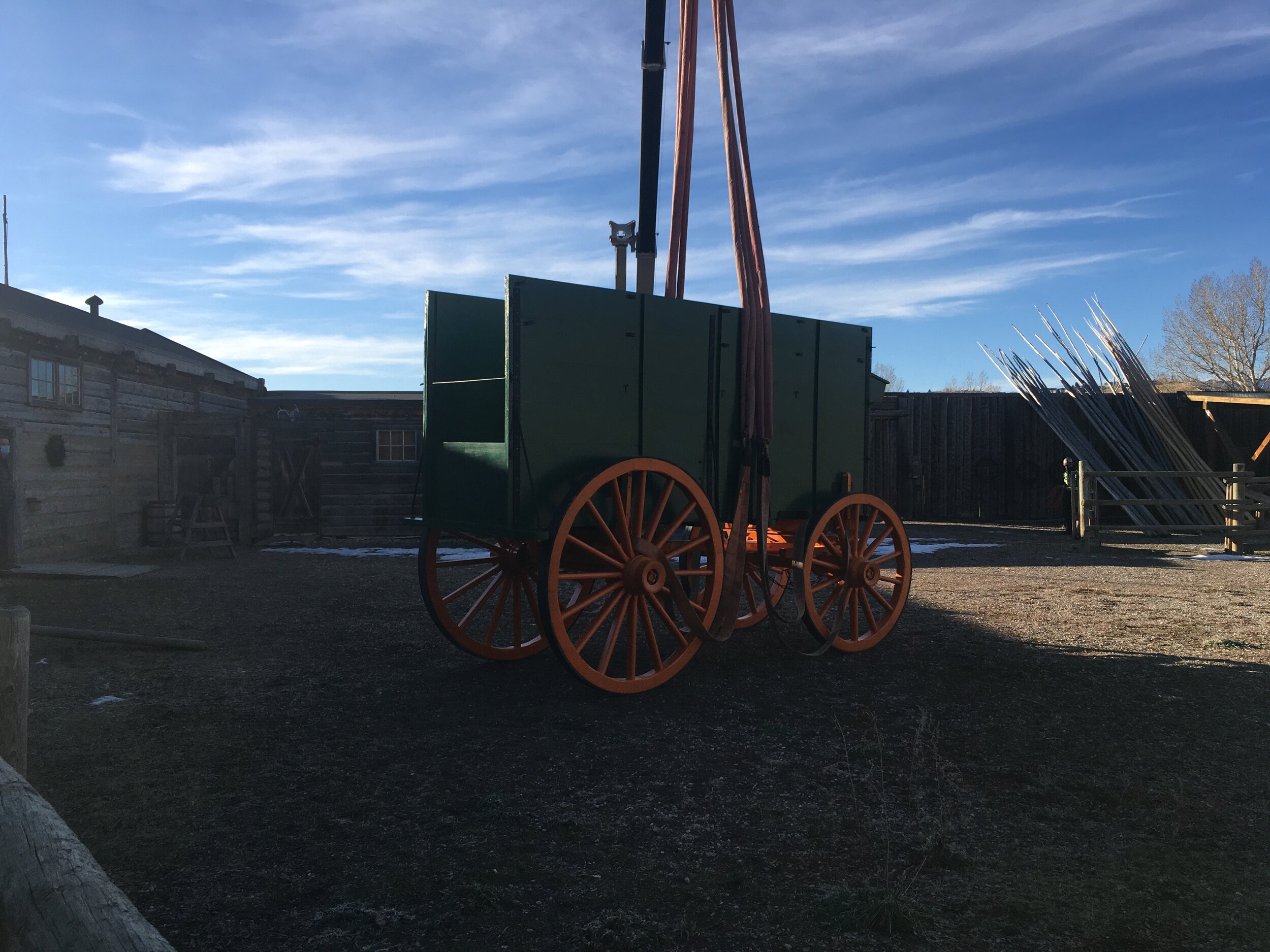New Wagon Arrives at Fort Whoop-Up
The bull wagon stationed in the compound of Fort Whoop-Up
Photo by Fort Whoop-Up.
When we think about bull or freight wagons today images of large stock trailers hurtling down provincial highways filled with livestock on their way to market come to mind. But that was not always the case. Bull wagons or heavy-duty freight wagons being pulled by oxen were a common scene on the Canadian prairies before trucks and trains. They were the lifeblood of the trade network which connected this region with the United States. The oxen were large and powerful and could pull difficult and heavy loads over an extended period of time across the prairie landscape safely and effectively.
Fort Whoop-Up would have been witness to bull wagons of various shapes and sizes during its operation in southwestern Alberta prior to the turn of the 20th century. Trade was central to the existence of the trading post. It was a hub for how furs – the most prized being bison – moved out of the territory, and goods, including illegal whisky, moved in.
Earlier this year the Glenbow Museum in Calgary contacted the Galt to see if we would be interested in a replica of a bull wagon from their exhibits as they were preparing for a renovation. We said “Yes.” The wagon was built by Fred Findlay based on specifications provided by Glenbow researchers. It is approximately 5.5 m (18 ft) long, 3.1 m (10 ft) high (plus canopy) and 1.8 m (6 ft) wide. Each wheel weighs approximately 317.5 kg or 700 lbs. In order to get the wagon to Lethbridge, a team from the Galt worked with Glenbow staff to load and transport the object to Fort Whoop-Up. To our surprise, the wagon was too tall to roll into the compound and we had to come up with a new plan to get it in without jeopardizing the integrity of the fort. The solution: Zero Gravity Crane & Rigging Inc. Their professional team was able to cradle it and lift it over top of the wall. It is now safely and securely part of our fort collection.
The gift of such an incredible piece provides an opportunity for the Galt and Fort Whoop-Up to tell a better story about colonization and trade here in southwestern Alberta. The freight wagon is more than just an object; it embodies lived experiences and a way of life that is long past. As Galt Curator Aimee Benoit notes, “freight wagons were a critical aspect of the bison robe and whisky trade system between Fort Whoop-Up and Fort Benton, Montana in the 1870s. This addition will give visitors a better sense of the scale of trade and the goods being freighted back and forth.”
At the Galt Museum & Archives, we continue to collect objects and share stories. Next season, at Fort Whoop-Up our staff will be afforded the chance to incorporate this gift into stories about the bison robe and whisky trade in what we now call southwestern Alberta.
We hope to have a special celebration commemorating this amazing gift in the spring of 2021 at Fort Whoop-Up.





